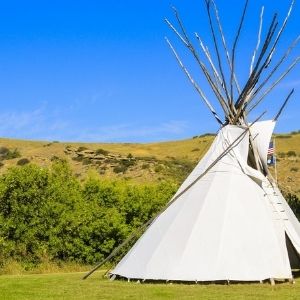Lewis & Clark Caverns State Park
Lewis & Clark Caverns State Park

Located just east of Whitehall, MT, lies the Lewis and Clark Caverns. Discovered in 1892 by local hunters, these caverns went on to become Montana's first state park.
As one of the largest known limestone cavern systems in the northwest, Montanans have been exploring the caves for over 100 years!
Interested in tours?
Access to the cave is by guided tours only, May through September, with limited candlelight tours offered in December. Lewis & Clark Caverns State Park also features camping and a network of trails to hike or bike, a state-of-the-art visitor center, interpretive displays, a gift shop, food and beverage concessions, an amphitheater, and interpretive events presented during the summer months.
Looking to camp?
The park has a large campground with 40 campsites, a tipi, and three cabins, which you can reserve online, and a group camping area, which you must contact the park to reserve. There is a $5 charge to use the dump station.
The site encompasses 3,015 acres. The entry area is at an elevation of 4,300 feet and the caverns area is at an elevation of 5,300 feet.
Cave access is only available through the guided tour. You will be asked to please wear a mask.
Cavern Tours are now being offered.
The park offers two tours: The Classic Tour, which visits the majority of the developed cave but is physically challenging, and The Paradise tour, that will guide you to the largest, most decorated rooms of the cave. Tour length is approximately 1 mile and the tour takes about 1 1/2 hours.
The tours are first come, first served.
Tickets are limited.
Get in touch with the park for more information.
Bring a face covering. Face coverings are required during cave tours.
Although optional for other areas of the park. Park disinfecting procedures involve using a bleach solution.
Visitors should consider wearing new or very clean gloves, especially in the caverns where the handrails are cleaned with a bleach solution every tour.
Because of group size restrictions, tours are very limited. Park facilities that are open now are disinfected intermittently. We suggest visitors bring hand sanitizer and/or disinfecting wipes for personal use.
Lewis & Clark Caverns State Park features one of the largest known limestone caverns in the Northwest.

Curious what other visitors have had to say about the park?

Park
Open Year-Round
Visitor Center
May through September: 9 a.m. - 4:30 p.m. daily
October through April: 10 a.m. - 4 p.m. daily
Water
Available May through September as weather allows
Showers & Comfort Station
Open through September as weather allows
Montana Gift Corral
Location
25 Lewis and Clark Caverns Rd. Whitehall, MT 59759
Lewis & Clark Caverns State Park Read More »


























































